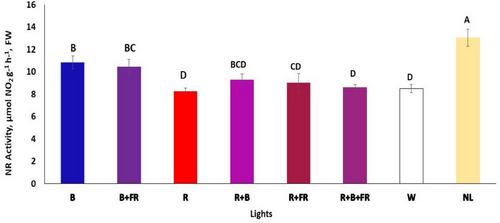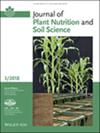Impact of Hydrolyzed Keratin Derived From Waste Sheep Wool on Growth Regulation and Nitrate Accumulation in Lettuce Grown Under Various LED Lighting Conditions
Abstract
Background
Nitrate accumulation in leafy vegetables poses health risks for humans.
Aims
The effect of hydrolyzed keratin (HK) on the development of lettuce grown under natural and various LED light sources, as well as its impact on reducing nitrate accumulation, was investigated in hydroponic systems.
Methods
HK was obtained from sheep wool, and its structural and molecular properties were determined using scanning electron microscopy (SEM) and confocal Raman spectroscopy. The plants were grown in a cocopeat. The light sources used in the experiment included Blue, Blue + Far-red, Red, Red + Blue, Red + Far-red, Red + Blue + Far-red, White, and natural light (NL), with HK concentrations in the nutrient solution set at 0, 25, and 50 mg N L−1 for the plants grown under these conditions.
Results
According to the results obtained from the research, the best plant growth and the highest nitrate accumulation were observed in plants grown under NL conditions. Among the LED light sources, the most ideal treatments for high yield and low nitrate accumulation were those with Red and Red + Blue + Far-red. The most significant outcome of this study was that the addition of HK to the nutrient solution led to a significant reduction in nitrate concentrations in the lettuce plants across all treatments except for the blue light source. The addition of HK to the nutrient solution decreased nitrate in most light treatments, highlighting its potential as a valuable additive in controlled agriculture.
Conclusion
These findings emphasize the potential to optimize light conditions and nutrient formulations to enhance plant health and safety in indoor cultivation.


 求助内容:
求助内容: 应助结果提醒方式:
应助结果提醒方式:


